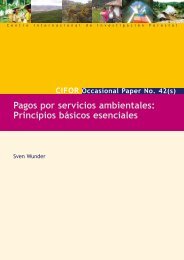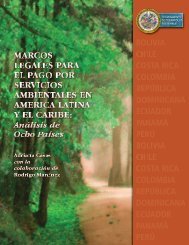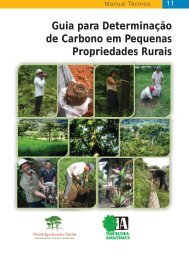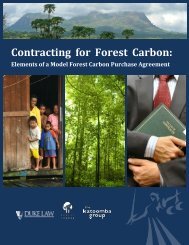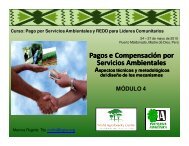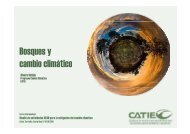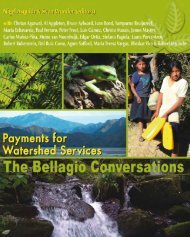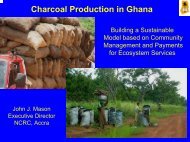Guide on Climate Change and Indigenous Peoples
Guide on Climate Change and Indigenous Peoples
Guide on Climate Change and Indigenous Peoples
- No tags were found...
Create successful ePaper yourself
Turn your PDF publications into a flip-book with our unique Google optimized e-Paper software.
<strong>Change</strong> ofTechniques• Freezing vs.drying, irrigati<strong>on</strong>vs. rain-fedagriculture• Food isbrought backto communitiesmore often inthe summer tostore in freezers<strong>Change</strong>of climatepatternsThe Gitga’at in British Columbiatraditi<strong>on</strong>ally sun-dry their food but nowfreeze their food or dry them indoorsbecause of unreas<strong>on</strong>able wet spells.<strong>Change</strong> ofLocati<strong>on</strong>• Shiftingagriculturalactivities <strong>and</strong>/or settlementsto new locati<strong>on</strong>sless susceptibleto climaticc<strong>on</strong>diti<strong>on</strong>s• Relocati<strong>on</strong> ofindividual homes<strong>and</strong> villages,infrastructure<strong>and</strong> watersupplyAcuteclimaticcrises <strong>and</strong>l<strong>on</strong>g termclimatechangesThe Makushi of Guyana move fromtheir savannah homes to forest areasduring drought to plant cassava.The indigenous peoples of theLateau settlement in Vanuatu <strong>and</strong>Falealupo <strong>and</strong> Papa in Savai’i, Samoaab<strong>and</strong><strong>on</strong>ed their settlements for higherground after their communities havebecome uninhabitable due to flooding<strong>and</strong> tropical cycl<strong>on</strong>es.Several indigenous villages of Alaskaare currently actively trying to findout where they could move theirentire communities that are nowbecoming inhabitable due to thawingof permafrost, erosi<strong>on</strong> <strong>and</strong> large wavesslamming against the western <strong>and</strong>northern shores of Alaska.<strong>Change</strong>s inResources<strong>and</strong>/orLifestyle• Resorting to wildfoods• Adjustmentof livelihood<strong>and</strong> lifestyleto changingclimate patterns• Reducedapplicati<strong>on</strong>of traditi<strong>on</strong>alknowledge inday to day life<strong>and</strong> survivalEmergencysituati<strong>on</strong>ssuch asdroughts,floods,frosting orexcessiverainfallNormally reliant <strong>on</strong> agriculture, theKenyah of Borneo switch to extractingstarch from wild Sago palms during ElNino droughts.The Saami people are feeding theirreindeer with hay <strong>and</strong> fodder whenlichens are being encapsulated with icedue to winter rain. Reindeer herding isvital to their subsistence <strong>and</strong> ec<strong>on</strong>omy.Further, the elders do not trust theirweather reading skills anymore. Thus,their traditi<strong>on</strong>al practices are not beingpracticed anymore.In the El Niño droughts of 2005,indigenous peoples in the Amaz<strong>on</strong>basin switched to a reliance <strong>on</strong> fish.PART IV: Adapting to <strong>Climate</strong> <strong>Change</strong>: <strong>Indigenous</strong> <strong>Peoples</strong> Show the Way 45



